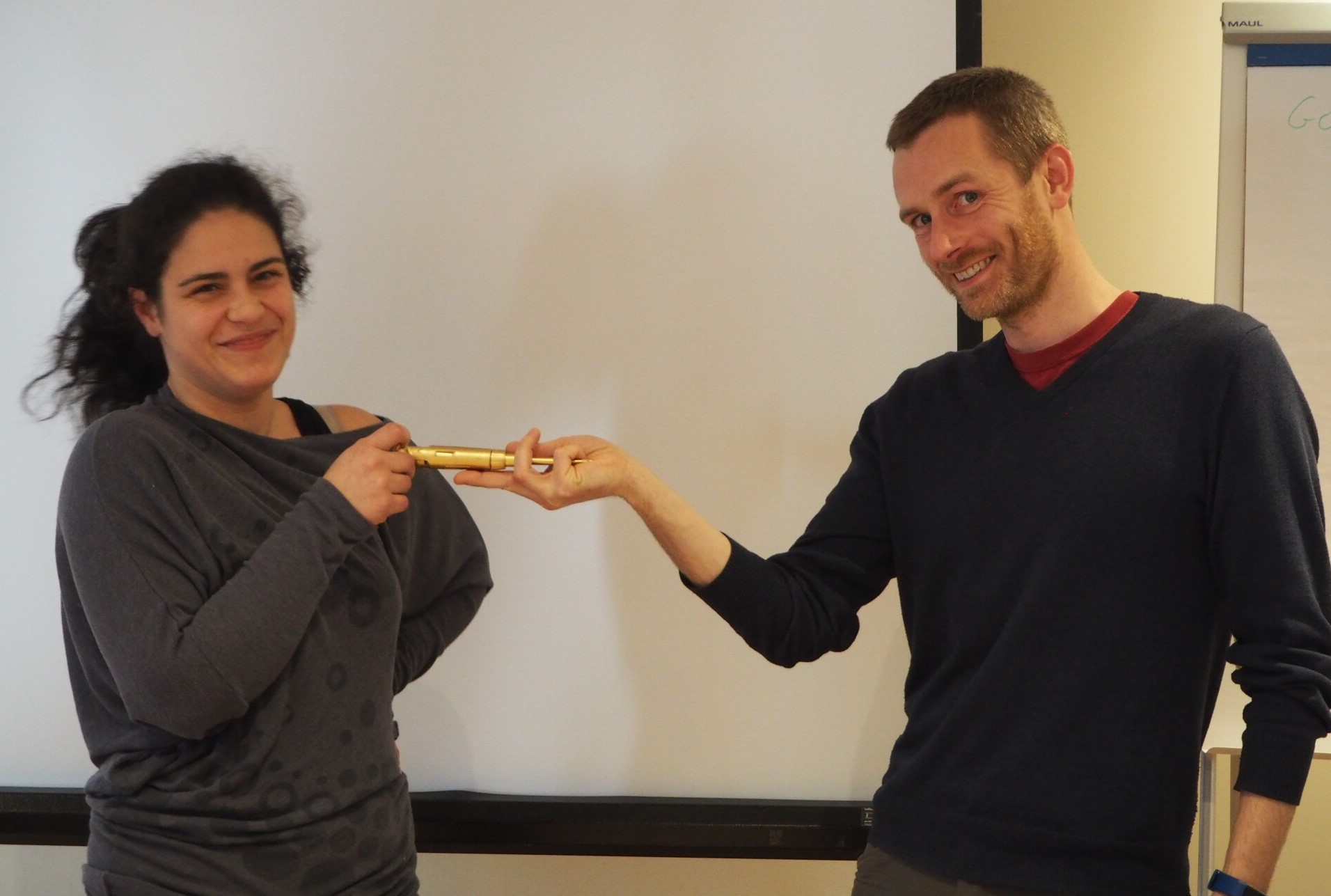 Next week Dr Susan Schlenner starts as a tenure-track professor in our laboratory.
Next week Dr Susan Schlenner starts as a tenure-track professor in our laboratory.
Growing up in East Germany, Susan started her scientific training with Prof Hans-Reimer Rodewald at the University of Ulm. From 2003-2008, Susan worked on her PhD on protection from the toxicity of snake venoms (J Exp Med, 2007). Dr Schlenner stayed in Hans-Reimer’s lab for a mini-post-doc on T cell development, generating IL7Ra-Cre mice to trace the fate of early T cell development (Immunity, 2010). These mice have become one of the key tools of the field, leading to dozens of high-level middle authorships.
In 2009, Dr Schlenner left to Harvard, to post-doc with Prof Harald von Boehmer. At this point, she entered the regulatory T cell field, again creating new mouse strains to redefine the basic biology (J Exp Med, 2012).
We were lucky enough to recruit Susan in 2012. We had just decided that we needed a top-level molecular biologist when Susan turned up. She immediately solved our problems on a transgenic that we had been struggling with for years, and set up a molecular biology platform in the lab. Susan designed her own high-level projects, and secured independent funding for them, which she is now pursuing with her own team. However Susan has always been ready to drop everything to help out the lab, playing a pivotal role in getting our diabetes story in Nature Genetics, and spending her last days before giving birth generating the key preliminary data for an ERC grant for the lab.
When CrispR editing of mammalian cells first burst onto the scene in 2014, Dr Schlenner spend several years learning the new technique, importing all the tools to Leuven and optimising the process for high throughput genome-editing. The creation of the MutaMouse Core facility was the outcome of this patient work, and will revolutionise biomedical science in Leuven.
With Dr Schlenner achieving the hard-won honour of a professorship, I see lessons in her success that other post-docs could learn from:
1) Train with the best people. In the Rodewald and von Boehmer labs, Susan was surrounded by top scientists doing exciting work. An excellent environment is essential to blossom as a scientist
2) Learn how to do proper experiments. “Controls, controls, controls”, is Susan’s motto, every experiment needs the right controls to understand the result, otherwise it is just expensive play
3) Be prepared to work hard and work long. Experiments often don’t work; it takes grit and determination to tear the hidden secrets out from nature. To create her IL7Ra-Cre strain, Susan generated more than 3000 ES cell clones to screen, before finding the one single clone that set her career on a roll. Others would have given up early, and switched to an easier project, but Susan stayed the course. Persistence is a virtue.
4) Always keep on learning. So often we are scared to enter a field we don't know, or pick up a new technique. It is comforting to stay doing the experiments we already know how to do. Susan has always been prepared to start from scratch as a beginner, learning new techniques such as CrispR.
5) Publish top papers. Immunity and J Exp Med papers as first author, a Nature Genetics as co-last. It sounds obvious, but the top papers are the bed-rock upon which your career is built. If you ever get the opportunity to push a story into the very top level, you seize it and put in whatever effort it takes.
6) Make yourself valuable. Susan has always been a team-player, spending her time teaching others and rescuing difficult experiments. Susan always made sure that the people around her could succeed, rather than only looking out for herself. This was not just rewarded in her dozen middle-authorships, it also meant that she was always someone that her promoters were willing to support in return. Susan’s professorship is in no-small-part a direct consequence of the MutaMouse facility that she was building for the university – she made herself so valuable to the university that they needed to give her a position to make sure she stayed.
7) Stay in the game. It can be depressing looking at the odds of success in academia, but if you are not willing to put in the years, then you have no chance. Susan post-doc’d for nearly 10 years before achieving her professorship: don’t give up on your ambitions.
 Friday, June 29, 2018 at 2:07PM
Friday, June 29, 2018 at 2:07PM  Congratulations to Dr Brajic, who was successful in the prestigious (and highly competitive) FWO Post-doctoral Fellowship awards. Aleksandra will work on developing new tools to study the function of regulatory T cells in kidney disease.
Congratulations to Dr Brajic, who was successful in the prestigious (and highly competitive) FWO Post-doctoral Fellowship awards. Aleksandra will work on developing new tools to study the function of regulatory T cells in kidney disease. Liston lab,
Liston lab,  women in science
women in science 









